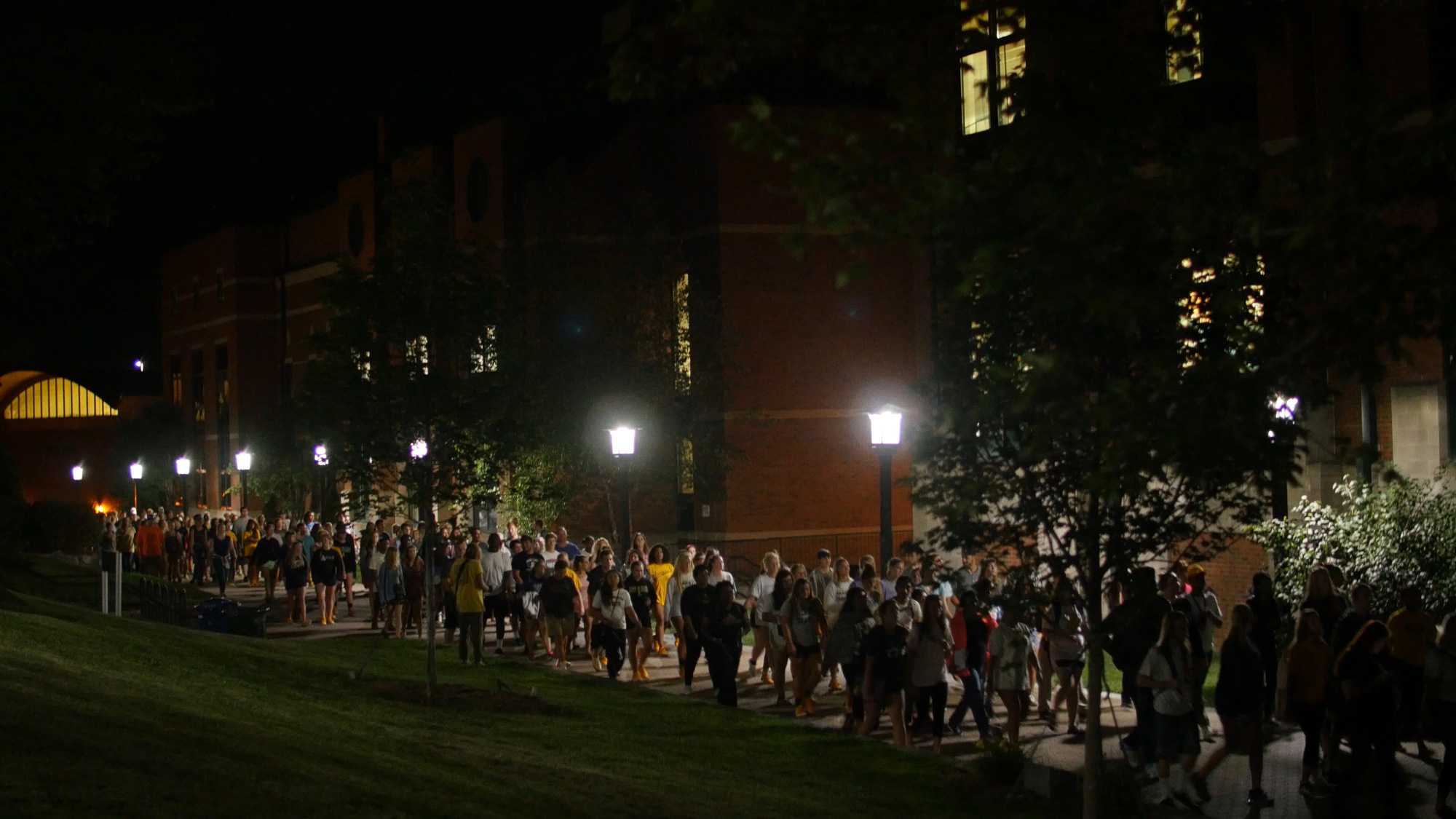The 28th annual Walk for Awareness was consolidated to the Schaefer Center on Tuesday due to rain, but the scheduled speakers and performances went on just as they have been since 1990.
The walk is a community gathering to remember and support both victims and survivors of interpersonal violence that started after an Appalachian staff member, Jeni Gray, was raped and killed in 1989. Five days later, the same man abducted and sexually assaulted an ASU student, Leigh Cooper Wallace, who helped the police find her abductor later that same night after she escaped.
Wallace’s motto, “You are stronger than you think,” still empowers students today, as it takes physical form on a marble plaque in Crossroads Coffee House in the Plemmons Student Union.
Wallace died four years ago due to medical issues unrelated to the events in 1989, but her family has carried on her fight for violence awareness. On Tuesday, Wallace’s father, Claude Cooper spoke to students during the airing of the short film “Why Walk?” Cooper said it was his daughter’s belief that “no matter how bad it is, you can recover.”
Guest speaker Shelley Clevenger, an assistant professor at Illinois State University with research interests in sexual assault, intimate partner abuse and cyber-victimization, said, “While I have done all of these interviews and I have heard about a lot of loss and I have heard a lot of people tell me really awful things, in the interview, they’re also very uplifting because they are given the term survivor for a reason. They did just that. They survived. We have to remain hopeful. We have to think about the fact that people survive. They go on.”
Willie Fleming, Appalachian’s chief diversity officer, said, “Violence robs and steals our innocence and sense of security.”
He referred to the Appalachian community’s resilience in 1989 after these tragedies when “we walked, we spoke, and we sang.”
“Tonight we come together to remember and challenge our community to stand up against violence of all forms,” Fleming said.
The event was full of information to educate students and community members on what to do in situations of violence.
Staff and faculty members shared the numerous on-campus and off-campus resources, as well as confidential and non-confidential resources, and they made sure the audience knew that they cared.
Appalachian junior and educator for the Red Flag Campaign, Ellen Trost, said that the Walk for Awareness “is a good way for the campus to show support for survivors and just show that people do care and that you aren’t alone.”
Story by; Rachel Greenland, Intern News Reporter
Photo by; Maleek Loyd, Visual Managing Editor

